This is the third in a four-part series by Capital News Service looking at immigrants in Maryland.
By Talia Richmond
Capital News Service
When Aruna Miller was a child, the discussions at her kitchen table almost never had to do with politics.
As part of an immigrant family, “the conversation more revolved around how to try and assimilate yourself into the new world,” said Miller, who left Hyderabad, India, at seven years old.
But as Miller grew older, politics began to start shaping her worldview. The 2000 election between Al Gore and George W. Bush – in which Democrat Miller’s candidate lost – changed everything, she said.
“That was the first time I had voted,” Miller said. “What I thought was being very engaged, voting, I realized that was just scratching the surface.”
Ten years later, Miller ran for the Maryland House of Delegates and easily won a seat. She continues to represent Montgomery County’s 15th District – which includes parts of Bethesda, Gaithersburg and Rockville, among other cities – after becoming the first Indian American woman elected to the state legislature.
Now she is aiming for Congress: when Rep. John Delaney, D-Potomac, announced in July that he would not seek reelection and instead would run for president in 2020, Miller announced her candidacy to replace him.
A growing feeling
With Donald Trump in the White House, Miller said the same kind of frustration she felt after the 2000 election is growing in Montgomery County’s large Indian American community. Although it’s a demographic that typically lags in political engagement, Miller says these constituents are expressing more desire to get involved.
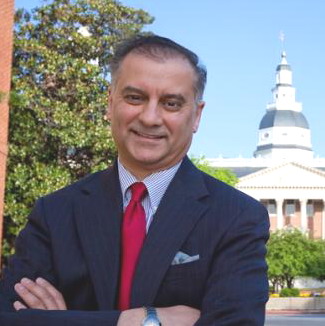
Del. Kumar Barve
Montgomery County is the site of historic steps forward for Indian Americans in the political arena. In 1990, Del. Kumar Barve, D-17, became the first person of Indian descent to be elected to any state legislature in the United States. He served as House majority leader from 2003 to 2014, and is now chair of the House Environment and Transportation Committee.
To Miller, it makes sense that Montgomery County was the first in the nation to break such a barrier – more than 30% of the population is immigrants, including almost 21,000 people born in India.
“Because we live in such an inclusive area, our residents are very open to people of different backgrounds running for office,” said Miller, leader of the women’s caucus in Annapolis. “They don’t see us as someone different, they see us as another American.”
Another Indian American Democrat, Del. Sam Arora, was a member of the Montgomery County delegation from 2011 to 2015.
Following the example set in Montgomery County decades ago, the 2016 election was a landmark year nationally for Indian Americans in politics. California’s Kamala Harris was elected as the first Indian American U.S. senator, and for the first time, the demographic that makes up about 1% of the United States population also makes up about 1% of Congress.
On the Republican side, two Indian Americans had already been elected governor of their states, Bobby Jindal in Louisiana and Nikki Halley in South Carolina. She is now the U.S. ambassador to the United Nations. In Maryland politics, Dwight Patel, an architect and technology expert, is first vice chair of the Montgomery County Republican party, and Sam Maholtra had been Gov. Larry Hogan’s chief of staff and secretary of human resources.
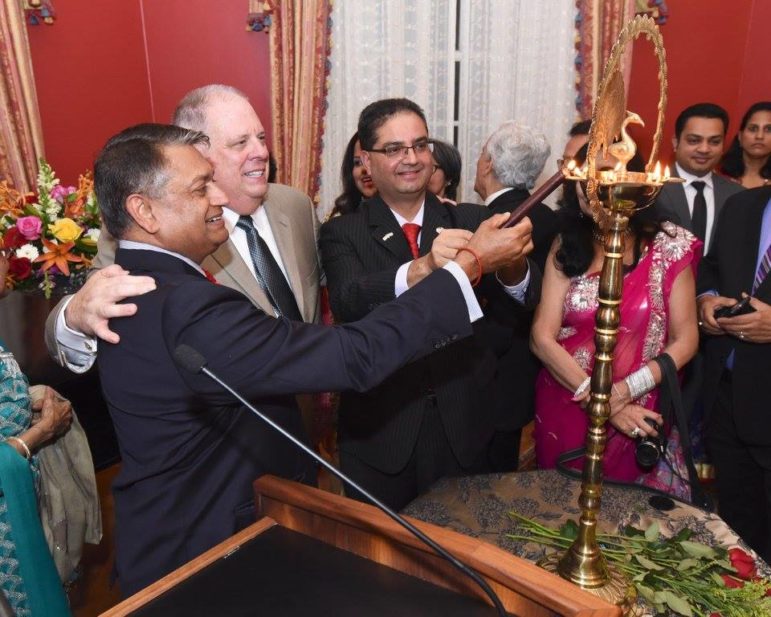
With former chief of staff Sam Maholtra and other members of the Indian American community, Gov. Larry Hogan lights a lamp to celebrate Hindu festival of Diwali last month. Governor’s Office photo
More Indian American activism
This record success, combined with Trump’s rhetoric about immigrants, has prompted more activism in Maryland’s Indian American community, Miller said.
Shruti Bhatnagar founded the Indian-American Democratic Club of Maryland to prepare for the 2016 election. During a divisive year, Bhatnagar said, it was important to maximize voter registration and participation among Indian Americans, who overwhelmingly vote Democratic.
“I felt it was really important that there be a voice for Indian Americans,” said Bhatnagar, the budding organization’s president.
While Indian Americans are among the wealthiest and best-educated minority groups, the voter turnout rate among all Asian Americans lags behind other populations. Since 1998, only about three-in-ten Asian American eligible voters have participated in midterm elections, according to a 2014 Pew Research Center study.
More than 87% of Indian American adults were foreign-born in 2010, Pew reported.
Many Indian Americans don’t think they need to be politically engaged, Miller said, and even though India itself is a democracy, the American system of multiple layers of local, state and federal elections can be a mystery.
“Democracy is not an easy thing to understand,” Miller said. “It’s complex and cumbersome. For the average immigrant, when they try to understand it, it’s like ‘What?’”
A seat at the table
Barve said he believes his continued presence in the legislature is helping to change the apathy that sometimes surfaces in Indian American communities. By seeing him in office and reading about his actions in the newspaper, he said, more members of the community feel part of the political process.
“When people who look like you and think like you have a seat at the table, it means you’re not excluded,” Barve said.
For 23-year-old Montgomery County resident Nina Ganti, the visibility of Indian American politicians has meant “everything.” She interned for Miller’s office while studying at the University of Maryland, and now works as a staff assistant for Sen. Chris Van Hollen, D-Maryland.
“These are trying times and it’s special to know that Delegate Miller and people that look like Delegate Miller are able to find a voice,” said Ganti, a first-generation Indian American who plans to run for office one day. “We need minority women in these power positions. … It’s really special knowing there is an elected official that really is my exact identity.”
Miller joked that she’s trying to counter the tendency in the Indian American community to assume that “there’s only a couple of career paths – engineer, physician, or perhaps, an attorney.”
“It’s incumbent upon me to give as many opportunities as I can to other minorities,” Miller said.
She added that it’s also become her responsibility to assuage her constituents’ fears over recent hate crimes and discrimination against Indian Americans.
“People are fearful,” Miller said. “I’ve lived in this country for over 40 years, and I’ve never been as scared myself in the country that I call home…Being Indian American, I’m able to understand the unique challenges that our community faces.”

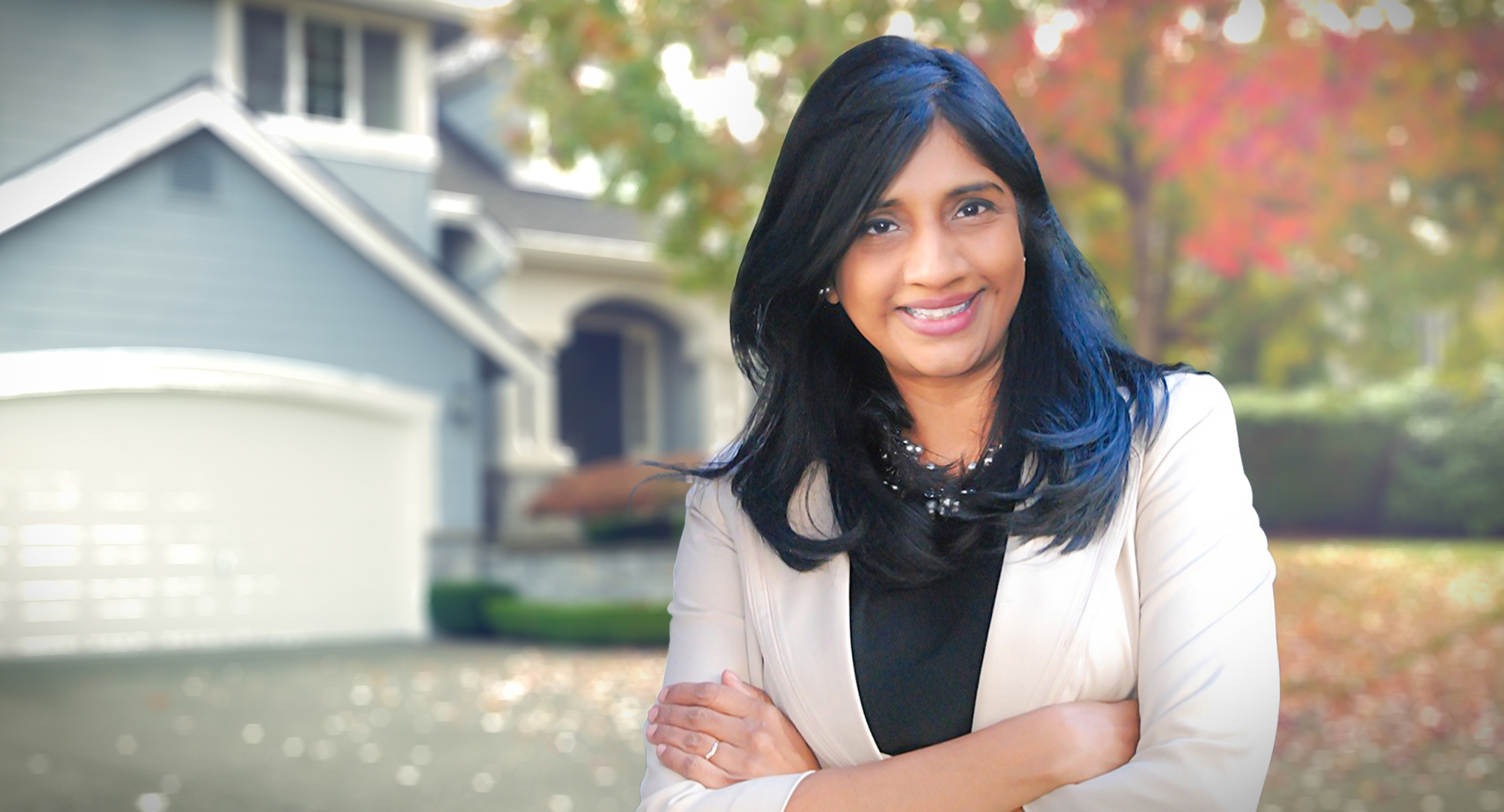
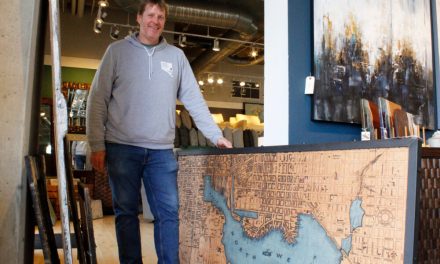
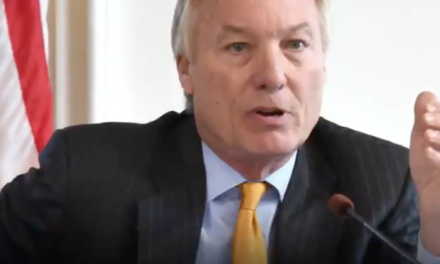


Recent Comments